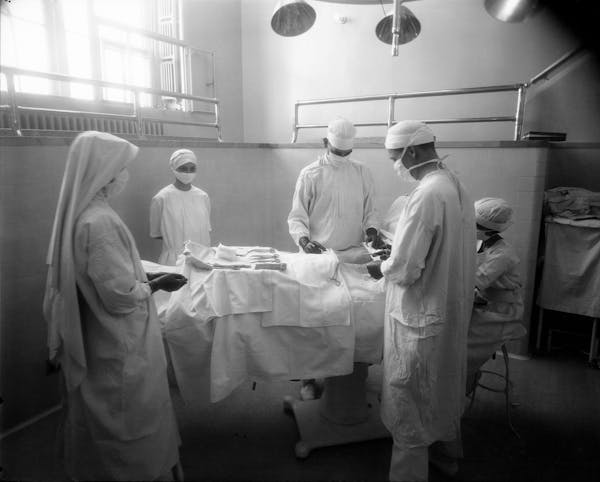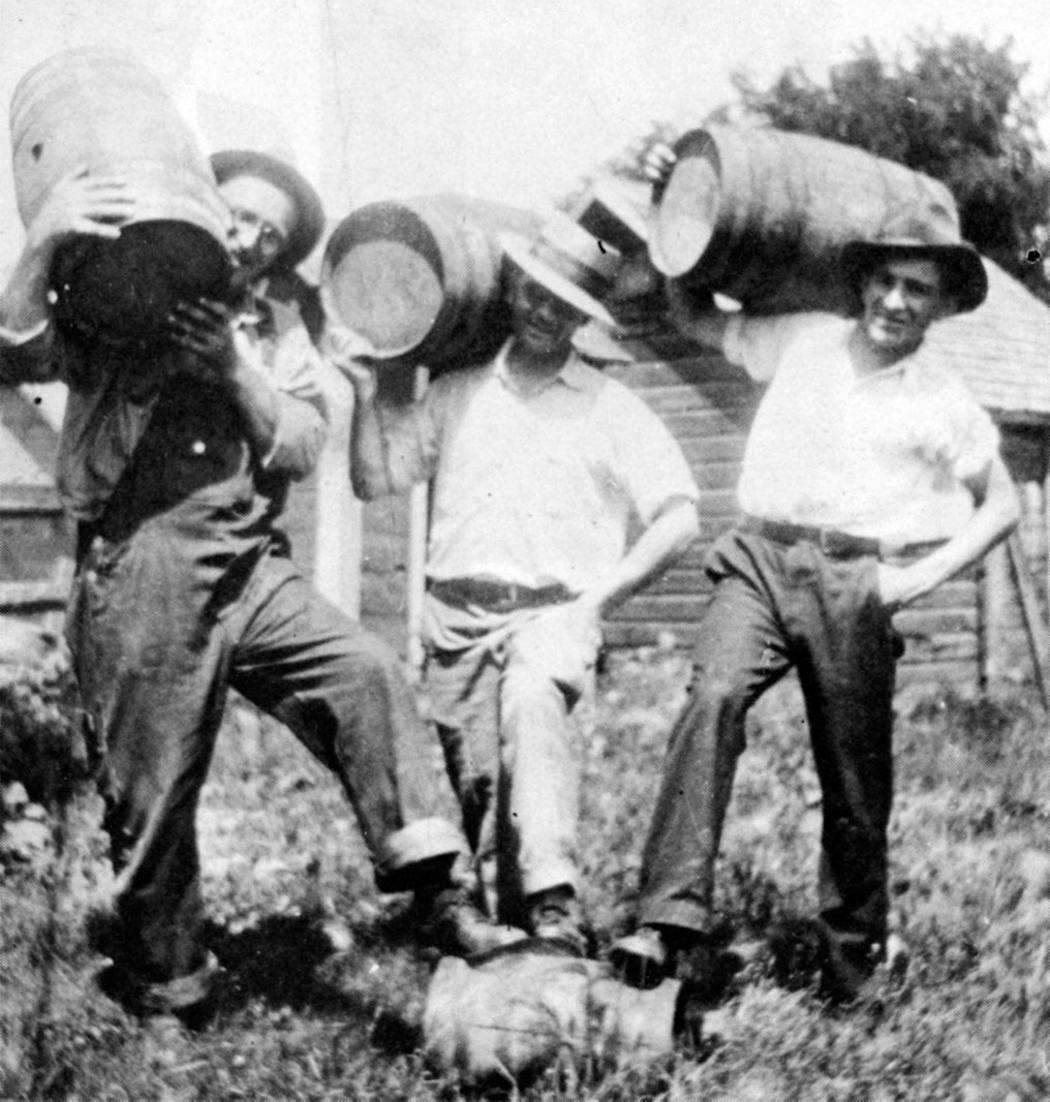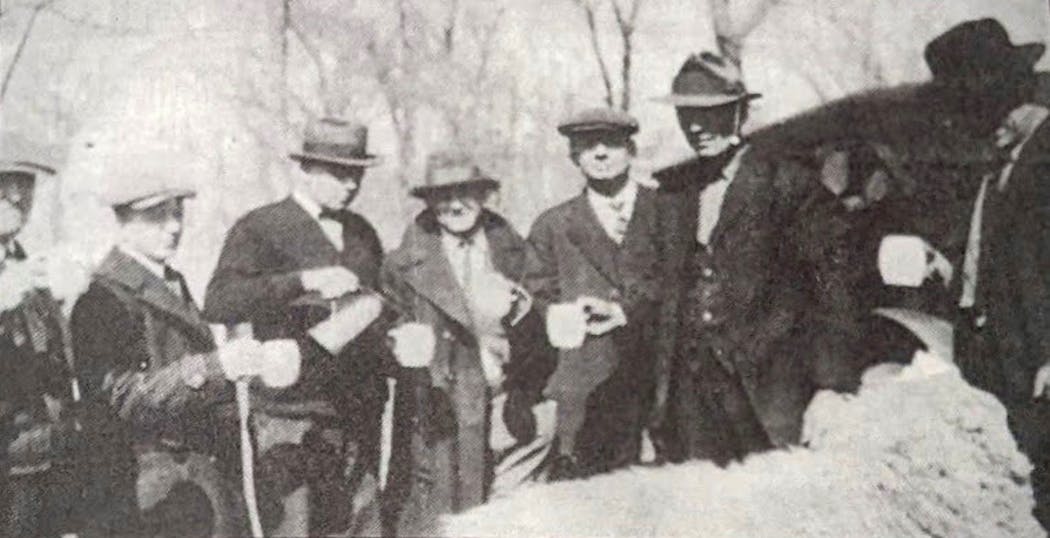How Minnesota farmers kept booze flowing during Prohibition
Listen and subscribe to our podcast: Apple Podcasts | Spotify
Growing up in rural Stearns County, Bryce Riesner had always heard lore about farmers making moonshine during Prohibition.
One of them was Riesner's great-grandfather. But his family doesn't know much about it. And even now, close to a century later, residents seem to be hush-hush about it.
That got Riesner, a 19-year-old urban studies major at the University of Minnesota, wondering what share of Minnesota farmers hid stills in basements, barns and brush piles to turn grain into alcohol. While at the State Fair this year, he submitted the query to Curious Minnesota, the Star Tribune's community-driven reporting project fueled by readers' questions.
Many Minnesota farmers were hocking hooch to pay bills during Prohibition — particularly in the central part of the state. But the precise share isn't known because production and sales weren't being counted or measured in a formal way.
Brad Carlson, a University of Minnesota Extension educator and self-proclaimed agricultural history buff, believes a small percentage of farmers accounted for widespread production in many rural areas.
"It may not have been 'everyone is doing it,'" he said. "But it probably was more like, 'everywhere you go, someone is doing it.'"
Rural distilling centers
Federal law banned the manufacture, transportation and sale of intoxicating liquors between 1920 and 1933. Prohibition was difficult to enforce, however, because moonshine was made anywhere from small stills buried in backyards to large distilleries run by mobsters.
The most famous bootleggers were organized crime figures like Kid Cann and Al Capone, who made millions during Prohibition. In the 1920s, federal agents raided several large-scale operations in Duluth, Minneapolis, St. Paul and Winona that were run by organized crime syndicates.
But many rural moonshiners were just farmers trying to survive the agricultural recession after corn prices plummeted. While some sold product to mobsters, many had little to do with the major syndicates.
Modern day researchers use clues like arrest records to suss out places where moonshining was likely more prevalent. Another telltale sign: counties with high concentrations of German and Polish immigrants.
Voting records indicate that places with many Scandinavian immigrants largely supported Prohibition. The same records show Germans and Poles were against the ban, likely because brewing beer and drinking schnapps were more prevalent in their cultures. This created demand and meant some people had at least a rudimentary knowledge of how to make alcohol.
Carlson, who grew up in rural Waseca County, said Mankato was one of those areas with a high concentration of German immigrants.
"I attended farm auctions [as] a small child with my dad and I can tell you not a year went by where we went to a sale where there wasn't an old still for sale," he said. "It was commonplace to see them."
Stearns County is thought to have been the hotbed for small moonshining operations in the state and across the federal district that stretched from Chicago to Montana, according to research by late St. Cloud State Prof. Elaine Davis, who published a 2007 book on Stearns County moonshining.
Capone is rumored to have visited Melrose in rural Stearns County to buy the local "Minnesota 13" moonshine, which helped give the concoction a national reputation for its quality. But mobsters weren't able to strong-arm their way into operations in Stearns County because so much of it was done in family homes or hidden among the hills and forests of the area.
Drawing on interviews with dozens of Stearns County residents, Davis' book describes entire families participating in cooking and distribution of illegal booze. Some mothers would cook moonshine in copper tubs and then sew pockets into their children's coats so they could inconspicuously bring pints to town. And some fathers would tend to the fields during the day and then at night transport moonshine hidden in secret car compartments.
Davis wrote that local historians estimate four out of five Stearns County residents were involved in moonshining in some way, with Holdingford considered the capital city of moonshine.
That's where Kelly Nathe's grandfather made moonshine. She helped make a 2016 documentary chronicling the manufacturers of Minnesota 13, which was named after the University of Minnesota's prominent corn variety at the time.
"I had been watching 'Boardwalk Empire' and I had a flashback to my childhood where I saw newspaper clippings about my grandfather being arrested for having a still on the farm," Nathe said. "They all knew how to make beer and making whiskey is sort of the next step."
A moonshining monk
Some of those central Minnesota stills are thought to have had a divine origin.
While not well-documented in the St. John's Abbey archives, several historians and residents say a monk at the abbey made stills for local farmers in the blacksmith shop. He also taught folks how to safely make alcohol without the chemicals that could leach into the liquid and make it unsafe — a problem that plagued many moonshiners across the country.
The monk's name was Brother Justus, who grew up as William Trettel on a Stearns County farm. He is also now the namesake of Brother Justus Whiskey Co., founded by Phil Steger, a St. Paul resident who graduated from St. John's University.
Trettel's philosophy held that moonshine was illegal but not immoral, according to information Steger gleaned from Trettel's nephew. Trettel thought farmers had the right to make and sell moonshine to survive. But they also had the responsibility to make it safely.
"That's our Jim Beam. That's our Jack Daniels. That's our Prohibition hero," Steger said. "And of course in Minnesota, it would be a monk, not a mobster."
If you'd like to submit a Curious Minnesota question, fill out the form below:
Read more Curious Minnesota stories:
Did St. Paul really protect gangsters during the Prohibition era?
How did Kid Cann become Minneapolis' most infamous gangster?
Who dug the sandstone caves along St. Paul's riverfront?
Was Moorhead once a destination for drunks?
Why does Minnesota have municipal liquor stores?
Why is Minnesota the last state with 3.2 beer?






